Sabina Nessa killing: Does following the 'rules' keep women safe?
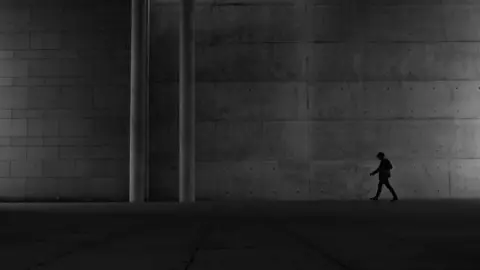 Getty Images
Getty ImagesThe safety of women as they go about their daily business has once again been thrust into the spotlight. And once again it's because a woman has been killed in apparently "safe" conditions.
Sabina Nessa, a 28-year-old primary school teacher, was on her way to meet a friend for a Friday evening drink. She set out on what should have been a five-minute walk through a well-used public park at about 20:30 BST and never reached her destination. She was discovered by a member of the public the following evening.
Speaking at a news conference in relation to Ms Nessa's death, Det Ch Supt Trevor Lawry from the Met Police said: "The streets are safe for women - people should be free to walk around free from fear".
Later, a community group handed out information sheets printed from the Met's website, giving "tips for staying safe on the street". Women are told not to wear headphones. We are told to stick to busy places, to hide our valuables. We must walk where there is good lighting and pre-book our taxi home.
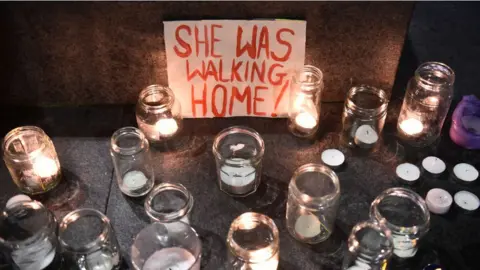 Getty Images
Getty ImagesSix months ago, Sarah Everard was abducted, raped and murdered by a stranger. She followed a number of the protocols with which women are often issued: she walked along a main road, at the relatively early hour of 21:00, wearing sensible clothes.
And she trusted a police officer. One of the people we are told to seek out if we feel we are in danger.
Nine months before that, sisters Bibaa Henry and Nicole Smallman were murdered by a stranger. The theory of "safety in numbers" did not save the sisters, who were together when they were stabbed multiple times in a public park. Staying in contact with partners via text and organising a cab to pick them up did not stop a man deciding to kill them in a so-called deal with a so-called devil.
Their friends found them in undergrowth two days later.
As Det Ch Supt Lawry says, of course women "should" be able to walk around free from fear. And of course the problem is with the men who murder them rather than the women wearing headphones. And of course women should not have to modify their behaviour in order to not be attacked or abducted or raped or killed.
But "worrying about our safety is an integral part of our existence as women," said Kelly Grehan, a director of 50:50 Parliament, a cross-party campaign group promoting gender equality.
"It is drummed into us from a young age that our actions determine our safety: when we were only allowed to go in public toilets in pairs, given rape alarms at secondary school and told we were 'asking for it' or 'jailbait' when we tried to dress like the pop stars we idolised before some of us had even started menstruating."
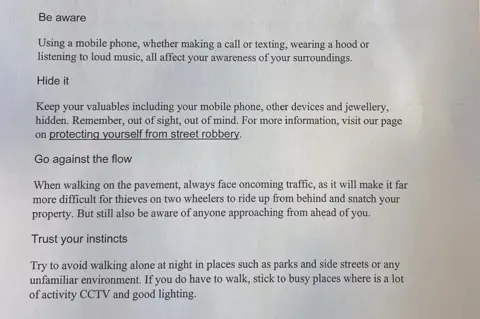
The killings of Ms Nessa, Ms Everard, Ms Henry and Ms Smallman create an extra frisson of fear because their randomness indicates all women are at risk. If Ms Nessa arranged to meet her friend at a different bar or at a different time; if Ms Everard had left her friend's house 10 minutes earlier or later; if Ms Henry and Ms Smallman had chosen a different part of the park to have their picnic, it could have been different women facing the final few hours of their lives. It could be any woman - even if she had followed the rules.
Academic studies have examined the ways in which women and girls trade their freedom to feel safer. One of the largest studies conducted on sexual harassment in Europe found that almost half of the 42,000 women surveyed had restricted their freedom of movement based on the fear of gender-based violence.
Prof Liz Kelly, the director of the child and woman abuse studies unit at London Metropolitan University, coined the term "safety work", to describe the strategies women develop in response to their experiences in public. Often done without thinking, these precautions become ingrained as habit, or "common sense".
And we all do it. We all make sure we have a fully-charged phone and do that spikey weapon-grip with our door keys at the same time as checking nobody is following us inside. We text when we are "home safe" and wait up until we hear the same from our companions. This is normal. This is accepted. This is part of being a woman.
The tips offered by police and other organisations perpetuate the idea of safety work: take a longer route if it's busier and better lit; search for a Tube carriage with other women in; wear flat shoes for the walk home (in case you have to run).
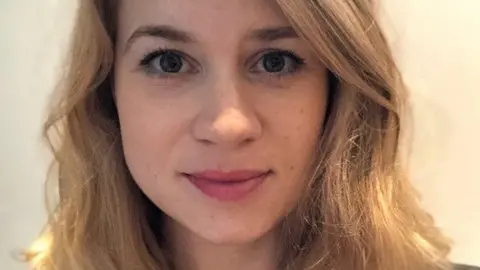
As Prof Kelly says, the "necessity of safety work steals our time and our energy - being vigilant means it is seldom possible to just be in public space, to feel joy in exercise or notice the changing seasons".
After Sarah Everard went missing, Met Police commissioner Cressida Dick tried to reassure women that incidences of abduction and murder were "incredibly rare".
And it's true - women account for about a third of all murders and of those, only 13% are killed by a stranger. Most are victims of a partner or ex-partner. It is far more likely that we will be killed at home than in a park.
So it's a balancing act - women have to take the precautions society deems reasonable while also trying not to overreact to dangers we're told are uncommon enough to be negligible.
Dr Fiona Vera-Gray, an assistant professor at Durham University, uses the term "the right amount of panic".
"This won't ever happen to you. Except if it does, because for some of us it will, it will be your fault for not being scared enough. Don't panic enough and it's your fault, but panic too much and you're hysterical."
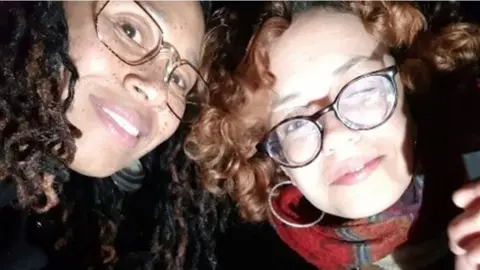 Henry/Smallman family
Henry/Smallman familyAnna Birley, a co-founder of campaign group Reclaim These Streets, said: "We often get told when the worst happens that the murder of a woman by a stranger in a public place is very rare and we are very safe.
"But the thing is, our lived experience of street harassment - cat-calling, a man exposing himself to us - tells us we're not safe, and murder is rarely the first crime someone commits.
"We shouldn't be looking to solutions that require women to change their behaviour.
"Women should be able to walk five minutes across a park at any time of day or night without fear of violence."
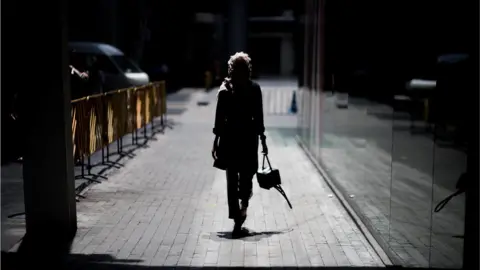 Getty Images
Getty ImagesIn an ideal world, everyone would live their lives unmolested. It would be safe to amble down dark alleys or across parks, whether sporting a diamond-encrusted miniskirt and platinum noise-cancelling headphones or a sackcloth boiler suit and an air of high alert.
But until we get to that utopia, if it is even achievable, is the advice offered by police and various safety charities actually something that protects women? If we disregard the hugely problematic narrative of victim-blaming, are they pragmatic - if unpalatable - tips that would keep us safe from stranger danger?
The deaths of Ms Nessa, Ms Everard, Ms Henry and Ms Smallman would suggest not.
They followed the "rules" and still got murdered. Ms Everard's killer wasn't put off by a brightly-lit busy road and plenty of CCTV cameras. The man who murdered Ms Henry and Ms Smallman was untroubled by the women not being alone and defenceless.
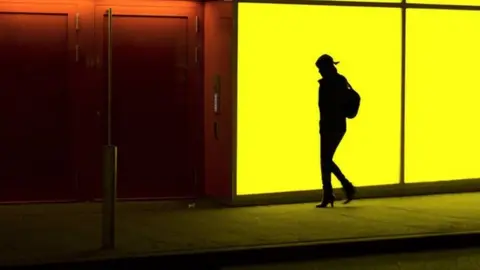 Getty Images
Getty ImagesThe cases above are the high-profile ones. There will have been a strata of incidents in which women were attacked but not fatally. In which someone tried to pull or persuade them into a car but were shaken off. In which a man said something sexually aggressive that didn't lead to a physical assault but did leave the woman upset and frightened and angry.
The women affected would have stuck to the guidelines, would have done their safety work. Very few women actively decide to put themselves in situations they are repeatedly told are dangerous.
A report by Her Majesty's Inspectorate of Constabulary and Fire & Rescue Services (HMICFRS) was commissioned by Home Secretary Priti Patel after the murder of Ms Everard.
It was published the day Ms Nessa was killed.
It called for "fundamental cross-system change" after identifying continuing failings, and suggested tackling violence against women and girls should be "as much of a priority as countering terrorism".
Mayor of London Sadiq Khan said there should be a "fully joined-up policy to address this issue, from school with boys being taught to respect girls; and proper healthy relationship education". He urged the government to "outlaw misogyny" and "make the harassment of women in a public place a criminal offence".
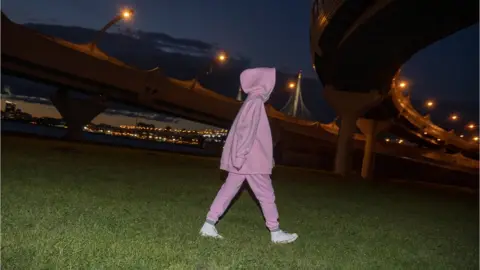 Getty Images
Getty ImagesEven if all those policies were put into place tomorrow, how long would it take to see real change? Until we get to the point that the concept of a "healthy relationship" is the norm, not something to be taught squeezed in between double maths and lunch?
Women are not attacked because of our route home; we are not attacked because our walk was not "purposeful" enough, or because of what we were wearing. If a woman is murdered by a man she doesn't know, it is because he wanted to murder her. There is no other reason.
Society as a whole - and women as individuals - owes him no excuse. No matter how well-meant, perhaps safety hints for women run the risk of offering one.
And in the words of Prof Kelly - what will it take to move the conversation from protecting women's safety to protecting their freedom?

Have you been affected by this story? Please share your experiences by emailing [email protected].
Please include a contact number if you are willing to speak to a BBC journalist. You can also get in touch in the following ways:
- WhatsApp: +44 7756 165803
- Tweet: @BBC_HaveYourSay
- Upload pictures or video
- Please read our terms & conditions and privacy policy
If you are reading this page and can't see the form you will need to visit the mobile version of the BBC website to submit your question or comment or you can email us at [email protected]. Please include your name, age and location with any submission.
